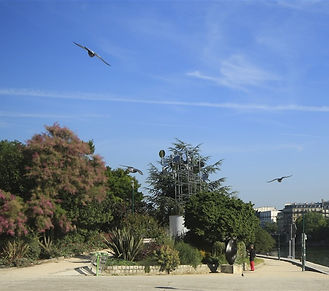SENA: MARGINS, ISLANDS, BRIDGES AND TOURS
Fundamental to the development of Paris, the River Seine, with its beautiful bridges and pleasant banks, is the authentic postcard of the city. Along its waters we can witness the history and progress of the capital.
The setting for several films, exhibitions, cultural and leisure activities, in addition to the stunning landscape, its surroundings are a charming place for tourists and residents, who regain it every day.
Visit our blog post on Tips
The history of Paris is closely linked to the Seine and the bridges that connect its banks. Today there are 37 (5 of them only for pedestrians). More than instruments for crossing, they are a mixture of art, architecture and history.
Visitors often come to the Île de la Cité to see Notre-dame, Sainte-Chapelle and the Conciergerie. Many are also looking for Pont Neuf, but are surprised to walk through its streets...
tours


Walking Tours - Only with small detours from the banks of the Seine, you can enjoy attractions, which are undoubtedly worth the trip.
Our list:
It wouldn't be too much to say that the River Seine (la Seine, for the French) is the heart of Paris. The attraction of the river over the city is so great that it influenced (and still does today) painters, poets, writers, lovers, residents and tourists for centuries.
The Seine is on the border of 10 of the 20 arrondissements and we can say that the city has evolved around this colossal artery for transport, commerce and all aspects of life in the capital. So much so that it is even used as a location: “Rive Gauche” (to the left of the river) and “Rive Droite” (to the right of the river), taking into account the direction of the current. The islands are central.
Its shores are home to some of the most beautiful places to stroll, do outdoor activities or rest. In summer, there's even a beach (artificial, but it's a beach. I guarantee it!). For those who can or want bank, several restaurants and even floating hotels are available. However, Paris is eclectic. For those who can't or want something simpler and cheaper, there is no shortage of places to enjoy the same view and pleasures with their own sandwiches, juices, cheeses and wines (picnics are very welcome).






